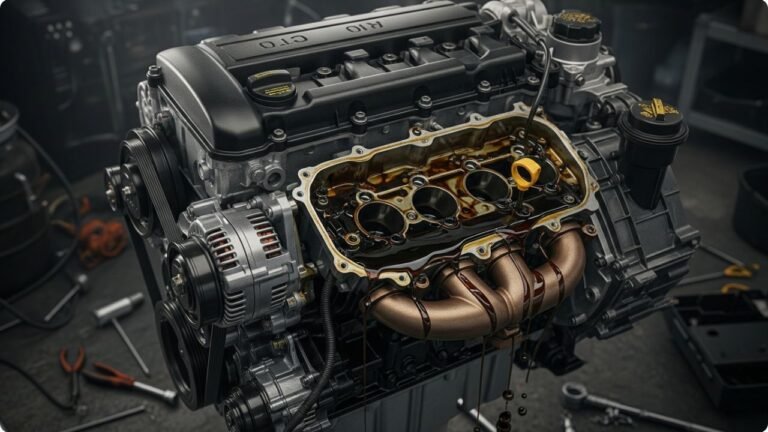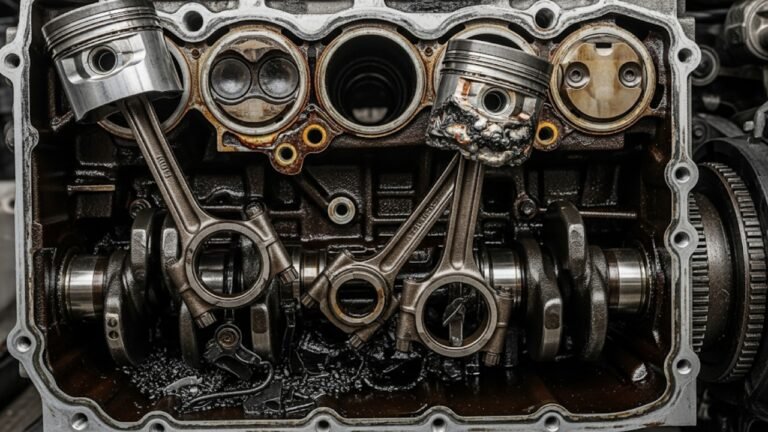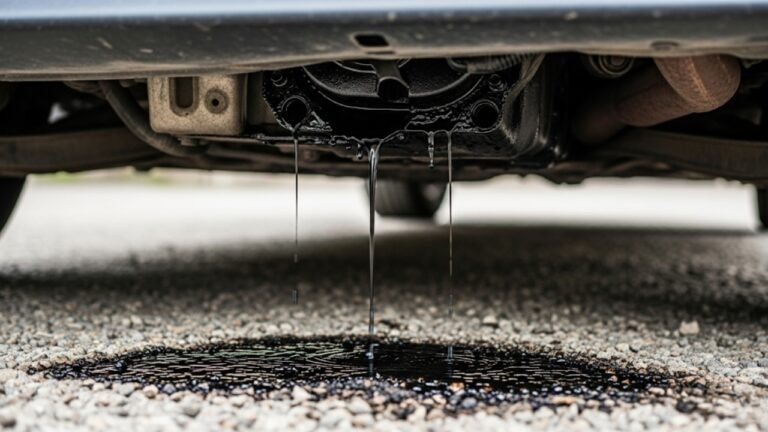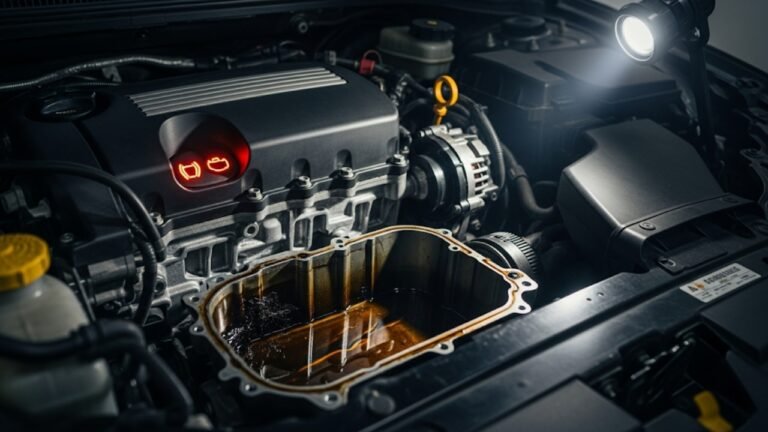Why Is My Car Burning Oil Smoke?
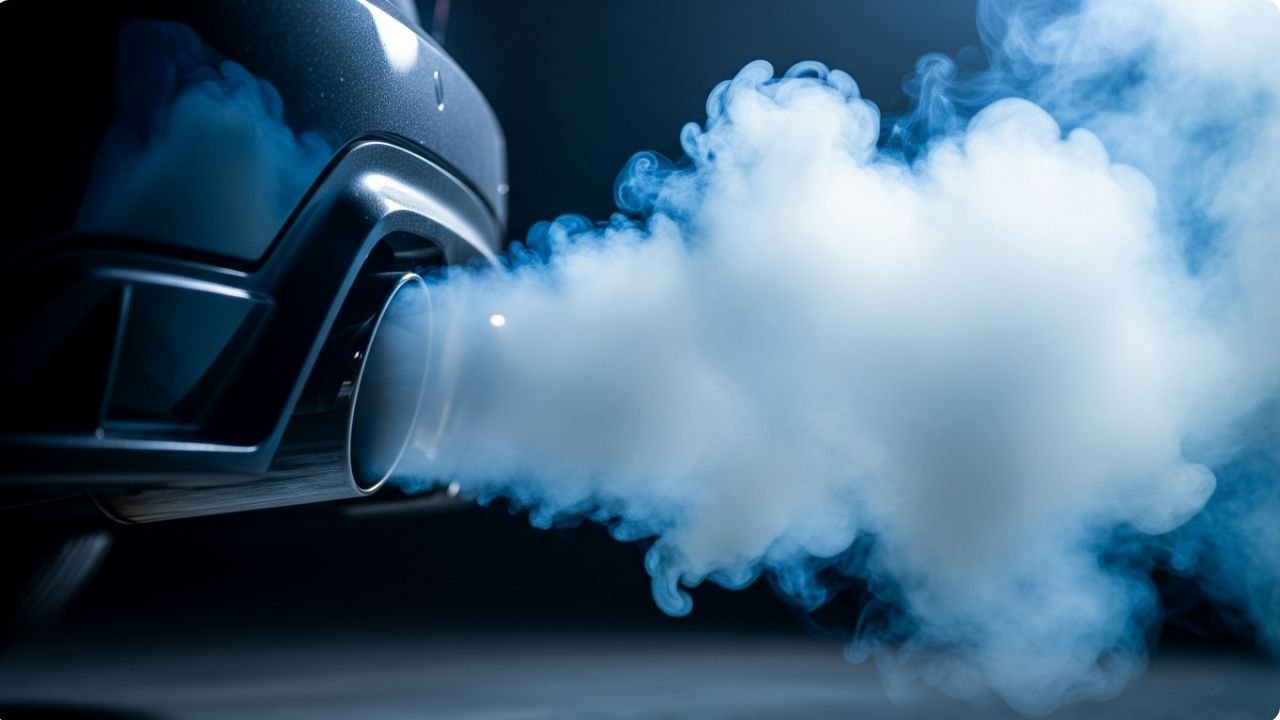
Have you ever been driving down the road, windows cracked just a bit, feeling pretty good—when suddenly, you catch a strong smell of burning oil and notice smoke trailing behind your car? It’s not just embarrassing—it’s worrying.
This happened to me once while driving my dad’s old sedan. At a red light, a driver next to me waved and pointed at the back of my car. I thought he was being friendly. Nope. My car was leaving behind a smoky trail like an old train in the movies. And let me tell you—nothing grabs your attention like car burning oil smoke in your rearview mirror.
In this guide, we’ll walk through:
- What car burning oil smoke really means
- The common causes
- Signs to look out for
- The difference between oil smoke and other types
- Tips to fix it
- Whether you should keep driving (hint: probably not)
Let’s keep this honest, lighthearted, and helpful—like you’re chatting with a friend who knows cars but won’t talk down to you. Sound good?
What Does “Car Burning Oil Smoke” Even Mean?
When we say your car is burning oil, we don’t mean it in a cool, fast-racing kind of way. We mean your engine is literally consuming oil—and smoke is the proof.
Here’s a breakdown in simple terms:
- Your car’s engine uses oil to lubricate internal parts.
- If oil leaks into the combustion chamber, it burns along with the fuel.
- This creates blue or gray smoke that exits through the exhaust pipe.
- You might also notice a sharp, chemical smell—kind of like an old workshop.
That smoke? It’s a warning sign. Your car isn’t just being dramatic. It’s telling you something’s wrong under the hood.
Think of it like a sick dog coughing—it may still walk, but you wouldn’t call it healthy.
What Causes a Car to Burn Oil and Smoke?
You might be wondering, “Why now? Why my car?” The truth is, many reasons can lead to car burning oil smoke. Some are minor. Others are deal-breakers. Here’s what to know.
Worn Piston Rings
These metal rings seal the combustion chamber. When worn, they let oil slip in where it doesn’t belong.
- Smoke color: Blue-gray
- Fix: Expensive—engine teardown
- Common in: Older vehicles with high mileage
Valve Seal Leaks
Valve seals prevent oil from entering the combustion chamber via the valve guides. But when they go bad…
- Oil drips in slowly
- You get smoke during acceleration
- Fix: Moderate to costly repair
PCV Valve Malfunction
PCV (Positive Crankcase Ventilation) valves regulate pressure and prevent oil leaks.
- If blocked or broken, pressure builds up
- Oil finds new ways to escape—like through your tailpipe
Head Gasket Damage
A blown head gasket can cause oil and coolant to mix.
- You may see white smoke (coolant) or blue smoke (oil)
- It’s a serious repair job—often $1,000+
How to Know It’s Oil Smoke and Not Something Else
Not all smoke is created equal. Your car may puff out different colors based on the issue.
Here’s a simple table to make sense of it:
| Smoke Color | What It Means | Likely Cause |
|---|---|---|
| Blue / Gray | Burning oil | Worn rings, valve seals |
| White (thin) | Condensation | Normal in cold starts |
| White (thick) | Burning coolant | Blown head gasket |
| Black | Too much fuel (rich mixture) | Fuel injector or sensor issues |
If your smoke is blue or gray, it’s a safe bet that you’ve got a car burning oil smoke problem.
Personal story? When I first saw blue smoke from my exhaust, I thought it was just cold weather. It wasn’t. By the time I checked my dipstick, I was nearly out of oil.
Can I Keep Driving If My Car Is Burning Oil Smoke?
Let’s be real—we’ve all tried to “wait it out” or “just get through the week.” But this isn’t one of those times. Driving with burning oil smoke isn’t just risky for your car—it’s unsafe for you and others.
Here’s why:
- Low oil leads to engine overheating
- Burning oil can damage spark plugs, catalytic converters, and more
- You could run out of oil mid-drive, causing engine failure
- It’s also bad for the environment
You might think topping off the oil regularly is a short-term fix. And it is—for a very short time. But oil isn’t meant to be burned like fuel. If it’s disappearing, the engine is suffering.
In short: If your car smells like an oil fire and smokes like a barbeque, it’s time to stop driving and start fixing.
Signs Your Car Is Burning Oil—Beyond the Smoke
Even if smoke hasn’t shown up yet, there are clues your engine might be consuming oil. Here are the signs to keep an eye on:
- Oil level drops fast between oil changes
- Burnt oil smell from under the hood
- Oily spark plugs (if you inspect them)
- Loss of engine power or acceleration
- Engine misfires or rough idling
- Oil puddles under the car (means a leak—but could still lead to burning)
If two or more of these show up? Time to get under the hood or see a mechanic.
When It’s an Easy Fix (And When It’s Not)
Not every case of car burning oil smoke ends in a wallet-crushing repair. Sometimes, it’s as simple as replacing a valve or cleaning a clogged PCV valve.
Easier fixes include:
- Replacing PCV valve
- Using a high-mileage motor oil
- Switching to thicker oil (consult your manual first)
- Tightening valve cover gaskets
Expensive fixes include:
- Replacing piston rings
- Rebuilding or replacing the engine
- Repairing a blown head gasket
Let your mechanic run a compression test. It helps find out whether the problem is internal and how deep it goes.
How to Prevent Oil Burning: Like Teaching a Teen to Cook Without Burning the House
Imagine teaching your teenager to cook. You don’t wait until the kitchen fills with smoke before you explain the stove’s settings, right?
Cars are similar. You prevent damage by being proactive—not reactive.
Here are some simple habits that can save you thousands later:
Change Your Oil Regularly
Fresh oil keeps seals healthy. Old, dirty oil breaks down and loses viscosity, slipping into places it shouldn’t.
Use the Right Oil Grade
Check your owner’s manual. Too thin, and it slips through seals. Too thick, and it doesn’t flow properly. For older engines, try high-mileage oil blends.
Watch for Early Symptoms
A slight oil smell? A small puff of smoke? Don’t ignore it. Early fixes are cheaper than full rebuilds.
Fix Leaks Fast
Oil leaks aren’t just messy—they’re warning signs. If it’s leaking, it could soon be burning.
Warm Up Your Car Properly
Especially in winter, give your engine a minute to warm up. Cold oil doesn’t flow well, increasing wear on internal parts.
You don’t need to be a mechanic. Just stay curious about your car. If something sounds off, looks odd, or smells weird—it probably is.
What Will It Cost Me to Fix Oil Burning Issues?
Here’s the hard truth: burning oil repairs vary wildly in cost. It depends on the cause, your car’s age, and labor rates in your area.
Let’s look at a cost breakdown:
| Repair Type | Estimated Cost (USD) | Fix Complexity |
|---|---|---|
| PCV Valve Replacement | $50 – $150 | Easy, DIY possible |
| Valve Seal Replacement | $300 – $900 | Medium – requires access to valves |
| Head Gasket Replacement | $1,000 – $2,500+ | Hard – labor-intensive |
| Piston Rings Replacement | $1,500 – $4,000 | Very hard – engine teardown |
| Full Engine Replacement | $3,000 – $8,000+ | Extreme |
This isn’t to scare you—it’s to empower you. Catch the issue early, and you might get away with a $100 fix. Wait too long, and you’re looking at replacing the heart of your car.
Choosing the Right Mechanic: Trust Is Everything
When dealing with car burning oil smoke, you need a mechanic you can trust. This isn’t a tire change—it’s your engine’s health.
Look for shops that:
- Provide written estimates
- Explain repairs in plain language
- Offer warranty on parts and labor
- Have good reviews from real customers
Ask questions like:
- “Can we try the least invasive fix first?”
- “Will a compression test tell us more?”
- “Do you offer high-mileage oil changes?”
Remember, it’s your money and your car. Don’t be afraid to get a second opinion.
Personal Story: The One Time I Ignored the Smoke
Let me get vulnerable for a second. A few years ago, I drove a beat-up hatchback that coughed out smoke every time I climbed a hill. I figured it was just age. I kept topping off the oil and ignoring the obvious.
One day, in the middle of traffic, the engine seized. I’d run it dry. No oil. No warning light (my bulb had burnt out). I had to get towed, and I lost the car for good.
Moral of the story? Burning oil smoke is the check engine light for your nose and eyes. Don’t wait for the engine to scream—listen while it whispers.
FAQs About Car Burning Oil Smoke
Why does my car smell like burnt oil but there’s no visible smoke?
Even if you don’t see smoke, burnt oil smells can indicate small leaks onto hot engine parts or mild oil consumption. Check under the hood and monitor your oil level.
Is it safe to drive short distances if my car is burning oil?
Only if you’re regularly checking and refilling oil—but it’s not a long-term solution. Even short trips can cause damage if oil levels drop unexpectedly.
Can synthetic oil stop my car from burning oil?
In some cases, high-mileage synthetic oil helps by conditioning seals. But if the damage is severe, oil type alone won’t fix it.
What color is oil smoke, and how do I tell it apart?
Oil smoke is blue or gray. Fuel-related smoke is black. Coolant smoke is white. The smell of oil smoke is acrid and unmistakable—like burning rubber and chemicals.
Will using engine stop smoke additives help?
Some products temporarily reduce oil burning, especially in older engines. But they’re not a cure—just a band-aid.
Can a clogged air filter cause oil to burn?
Not directly. But a clogged filter can cause pressure imbalances that affect engine performance, which may indirectly lead to oil consumption in rare cases.
How often should I check oil levels in a car that’s burning oil?
Every few days or every 100 miles is wise. Always check before long drives.
Should I sell a car that’s burning oil?
Depends on the cost of repair versus the car’s value. If it’s an old beater and repairs exceed its worth, it might be smarter to sell “as-is.”
Final Thoughts: Don’t Let the Smoke Fool You
Cars are storytellers. When your vehicle starts spewing car burning oil smoke, it’s not being dramatic—it’s crying out for help.
Whether it’s something small like a valve or big like piston rings, your engine is letting you know it’s time to act. The longer you wait, the costlier it gets—not just in money but in peace of mind.
Be the kind of car owner who listens, who notices the first sign of smoke, who catches the faint whiff of oil before it becomes a plume. You don’t need to be a mechanic. You just need to be present.
And next time you see someone with a smoky tailpipe, maybe give them a kind nod—not judgment. They might be one repair away from saving their ride.

